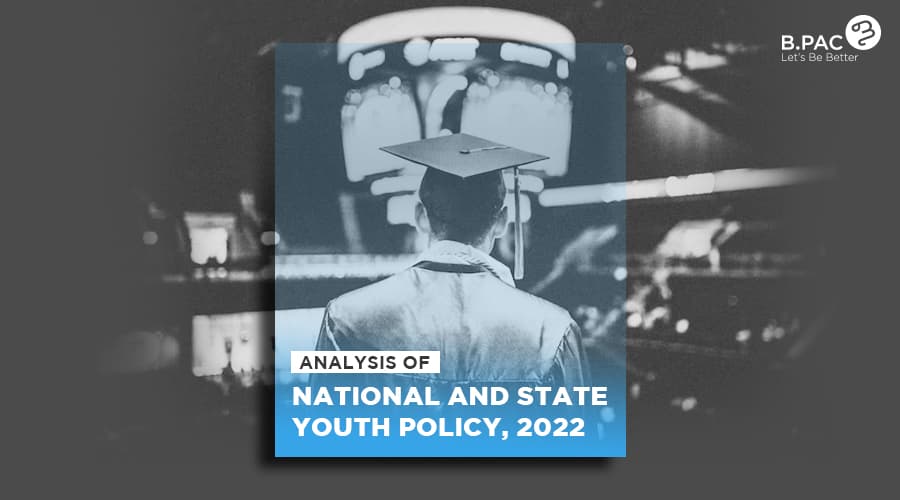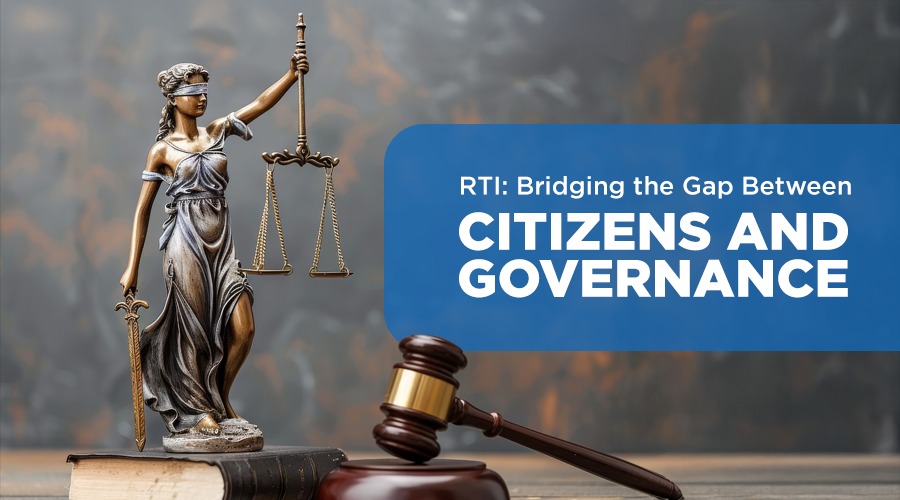Experts around the world are pointing out that this decade is India’s decade. The World Bank report says ‘India will remain one of the fastest growing economies’ despite challenges across the world and is set to become the third largest economy in the world by the end of the decade. One of the factors supporting these predictions is the availability of manpower in India.
India is presented with a demographic dividend and is the youngest country in the world. The highest working age ratio will be between 2021 and 2041, peaking in 2031. Youth (aged 15-29 years) comprise 27.2 percent of the population for 2021, and is expected to decrease to 22.7 by 2036. Theoretically, these numbers provide a golden window of opportunity between 2020 and 2040 for India to script high economic growth numbers and to become a developed country. But this opportunity is a double edged sword and failure to harness will prove detrimental to India. To make the economic predictions for India true, focussing on the youth of India gains importance. Education, skilling and holistic development of young India is the need of the hour.
In recognition of this, the Government of India has drafted a National Youth Policy, 2021 focussing on this decade. A State level youth policy on the lines National policy is equally important given the differential demography, development and economic opportunities across the country.
Acknowledging these differences, Karnataka has adopted Karnataka Youth Policy, 2022. This blog will focus on comparative analysis of Draft National Youth Policy, 2021 and recently adopted policy of Karnataka. It will also include recommendations to close the gaps and create opportunities for youth to contribute towards inclusive development of the state and nation.
KARNATAKA YOUTH POLICY, 2022:
The Karnataka Youth Policy, 2022 (KYP, 2022) based on the Projections by the SDG Coordination Center, Karnataka estimates that youth (aged 15-29 years) form 29% of the state’s population. Dr. R Balasubramaniam Committee acknowledging the importance of holistic development of this large section of the State has taken into cognizance the failures of the KYP, 2012 and the various changes that have occurred at various levels in drafting the policy. This has translated into several recommendations which can ensure that the policy vision of ‘building human and social capital in a sustainable manner’ is achieved by 2030 coinciding with Sustainable Development Goals.
POSITIVES OF THE POLICY:
Some of the positives of the policy which followed and implemented to the T by the State has the possibility to create true impact on the youth for years to come and who can further create impact in the society.
1.Focus areas:
The policy recommendations concentrate on six focus areas which are essential for overall development of youth. The recommendations and action points on each of the focus areas are in line with other policies and schemes of the state. This pushes other State policies to be implemented earnestly. At the same time the policy has focussed on areas which have earlier been ignored.
-
Education:
-
- Lays focus on district level surveys prior to drawing a plan of action. Annual follow ups and analysis of the results. This can bring about a more decentralized approach towards reducing dropping out rates, education outcomes. Etc.
- Focus has also been laid on ensuring skill training programmes for youth with different educational qualifications.
-
Employment and Entrepreneurship:
-
- Committee to examine reasons for employment skills gap and conduct district wise analysis of it. This is a step towards creating district specific employment opportunities and reducing migration.
- Focus on career counseling programs
- A statewide program to increase female labor force participation- a step towards improving gender equality
- Focus has been laid on developing entrepreneurial skills and networking.
-
Health and Wellbeing:
-
- Mental health, sexual and reproductive health, substance abuse, digital addiction has received special focus in the policy. This is indicative of how the policy is accommodative of evolving issues in the society and focuses on both preventive and curative care with respect to these issues among youth.
-
Sports and Fitness:
-
- The recommendations lay importance on increasing opportunities and talent searches in the area of sports. The emphasis on different sports and competitions in rural and tribal areas is laudable, thus promoting inclusivity.
-
Art and Culture:
-
- Cultural mapping of Karnataka and promotion of folk and tribal art has dual advantage. Along with safeguarding some losing traditions it can ignite interest and pride towards the rich heritage of the state. It is also an avenue for youth who can contribute towards preserving and promoting the art and culture of the state.
-
Value based Leadership:
-
- The recommendations will help to increase the participation of youth in democracy. Further, these recommendations have the potential to bring young people into policy making and build interest in politics which is on the wane.
2.Implementation Framework:
- Restructuring of the department to separate entities of youth empowerment and sport can lead to dedicated efforts for development in each area
- Setting up a research division will aid in evidence based policy making and achievement of targets in a time bound manner.
- The Yuva Budget is an innovative aspect of the policy. A youth specific budget can increase financial funding towards empowerment of young people who are the future of tomorrow. It also brings about financial accountability.
- The policy emphasizes cooperation, coordination and collaboration between various departments over a silos approach, thus holistic development of youth.
3.Monitoring and Evaluation:
This section of the policy is highly commendable and is a step ahead from the 2012 policy. With KYP, 2022 noting that only1/3rd of KYP,2012 was implemented. In light of previous experience, monitoring and evaluation gains significance to achieve the targets of KYP, 2022 and reap positive outcomes.
-
Karnataka Development Index:
The recommendation of an index is in line with Draft National Youth Policy, 2021’s recommendation to track progress. The metrics suggested by the committee cover most of the metrics suggested in the national policy.
-
Three Level Review:
-
- A three level review at Secretariat, Ministerial and Chief Minister level at quarterly, half-yearly and yearly intervals respectively has been suggested.
- Karnataka Development Index will act as the parameter at each of these levels to evaluate policy implementation.
- Regular review at each level and the areas of concentration at each review if followed as prescribed in the policy, will ensure policy implementation and can truly bring a change amongst the youth of Karnataka.
From above it can be observed that Karnataka Youth Policy, 2022 is comprehensive in nature and has touched upon most areas required for achieving its objective of ‘development of youth and youth for development.’ But there exist some gaps which require equal attention and have not made it into the state policy despite emphasis in the national policy.
AREAS REQUIRING ATTENTION:
1.Focus areas:
-
Education:
-
- Excessive focus has been laid on setting up committees to examine the issues and analysis of the implementation. It fails to suggest any innovative recommendations to address new challenges or methods to increase the pace of target achievement.
- Accessibility to digital education has received little attention.
- Value based education fails to be mentioned despite being a part of the national policy.
- Skill gaps assessment is part of the recommendations but a forward looking view focussing on evolving the skill set for the 21st century is absent in the policy.
- Inclusive education system- resources, pedagogies and trained teachers for tribal and disabled youth is an action imperative of the national policy. The state policy merely touches upon it.
-
Employment and Entrepreneurship:
-
- Social entrepreneurship despite being a rising field has not been included in the policy.
- Social security of informal and gig workers is not part of the recommendations.
-
Health and Wellbeing:
-
- Healthcare awareness, accessibility and affordability specifically for tribal youth, urban migrants have not received special mention.
- Health and wellbeing of youth with physical and intellectual disabilities, have failed to receive attention in KYP, 2022.
-
Sports and Fitness:
-
- While emphasis has been laid on promoting physical fitness and talent searches, quality coaching and accessibility to training has not made into the recommendations.
- National policy mentions the need to make efforts to ensure that a person’s involvement in sports creates opportunities for them in later stages, especially after retirement from active sports. Karnataka also has to pay attention towards this action imperative.
2.Monitoring and Evaluation:
The Karnataka Development Index can be made more comprehensive with inclusion of more specific metrics. Tracking parameters like average agricultural household income, number of elected PRI representatives under the age of 30, mental health professional to population ratio, prevalence of obesity among youth, percentage of youth under trials are a few parameters which are to be included as mentioned in the policy.
3.Others:
-
Social Justice:
a focus area under the National Youth Policy has not been included in the KYP, 2022.
-
- This focus area mentions increasing awareness of youth on legal rights and legal aid, preventing and addressing cybercrimes, enabling faster delivery of justice and strengthening juvenile rehabilitation.
- The absence of recommendations on these areas has to be overcome by state actions. At a time when juvenile crime rates are on the rise, lack of attention towards value based education, legal awareness and juvenile rehabilitation is a huge gap in addressing development concerns of youth.
-
Inclusivity:
-
- While the guiding principle of the Karnataka Youth Policy, 2022 mentions that it has factored in existing inequalities across gender, socio-economic groups, and geographies, it has not translated into recommendations or action areas.
- Tribal youth, youth with physical and intellectual disabilities, LGBTQ+ youth fail to receive the attention of the committee.
- The various disadvantaged sections of society do not explicitly find place in policy recommendations despite the National Policy ’s focus on inclusivity.
TOWARDS A YOUTH LED STATE:
Swami Vivekananda said, ‘… What we want are some young men who will renounce everything and sacrifice their lives for their country’s sake. We should first form their lives and then some real work can be expected.’ Drafting of a Youth Policy is the first step taken by Karnataka in forming the lives of the youth. Proper implementation of the policy and including recommendations of the National Policy which have not made it to the State policy can truly help in achieving holistic development of youth and navigating the double edged sword of demographic dividend. This in turn will help Karnataka in achieving economic growth and development led by the youth who in turn can make the economic predictions for India true.
*Karnataka Youth Policy, 2022 and National Youth Policy, 2021 here refers to the draft policies.





